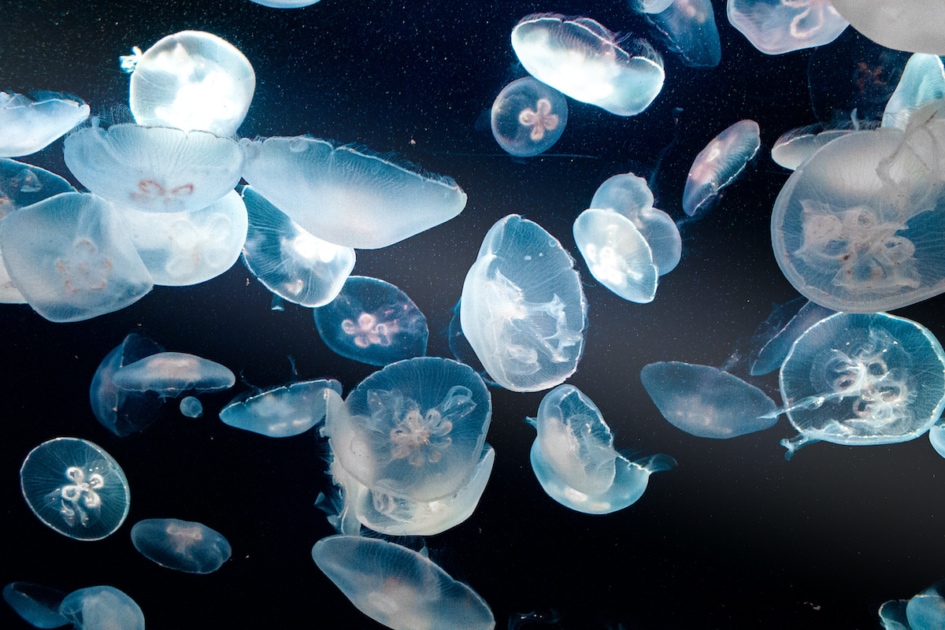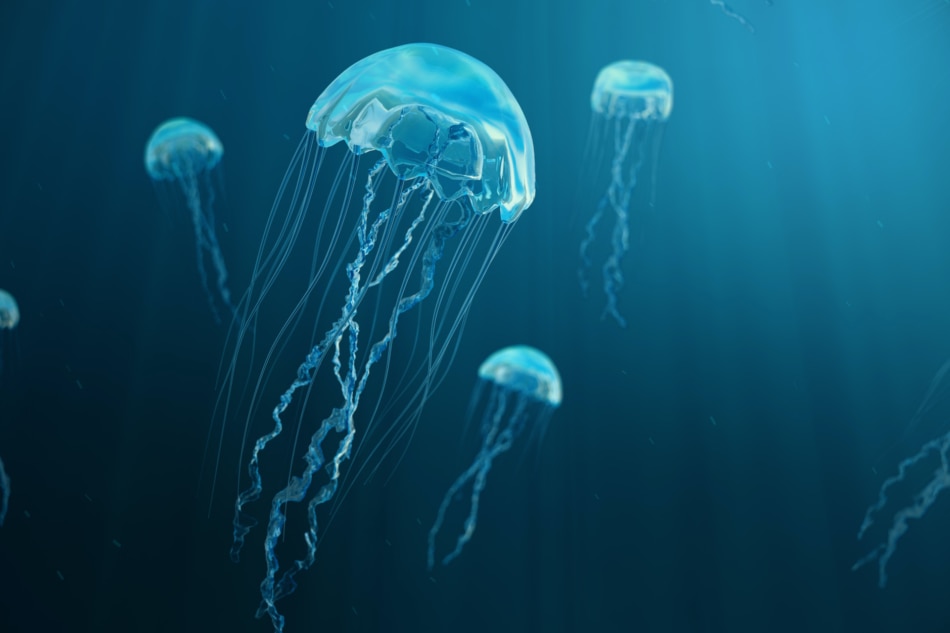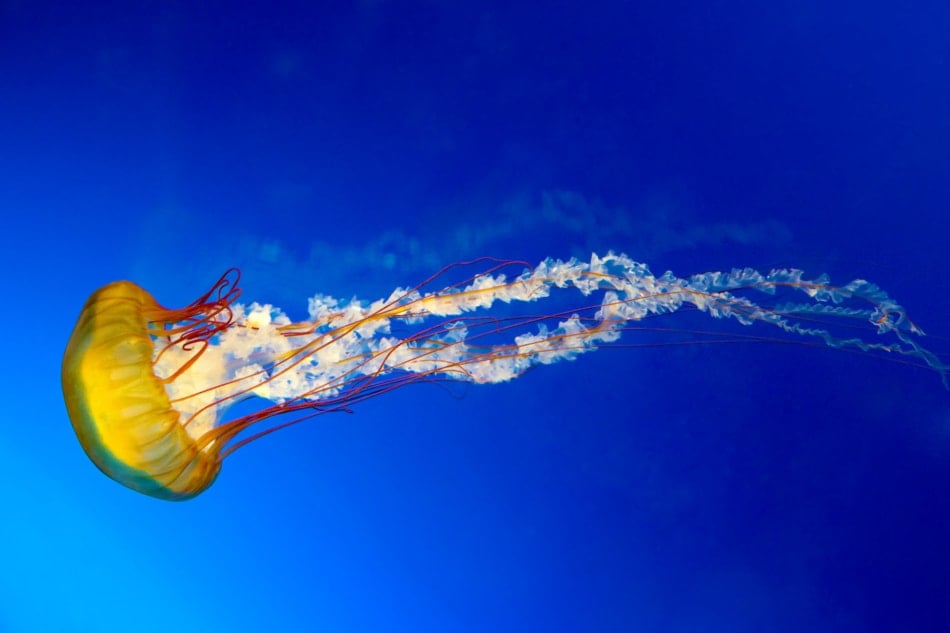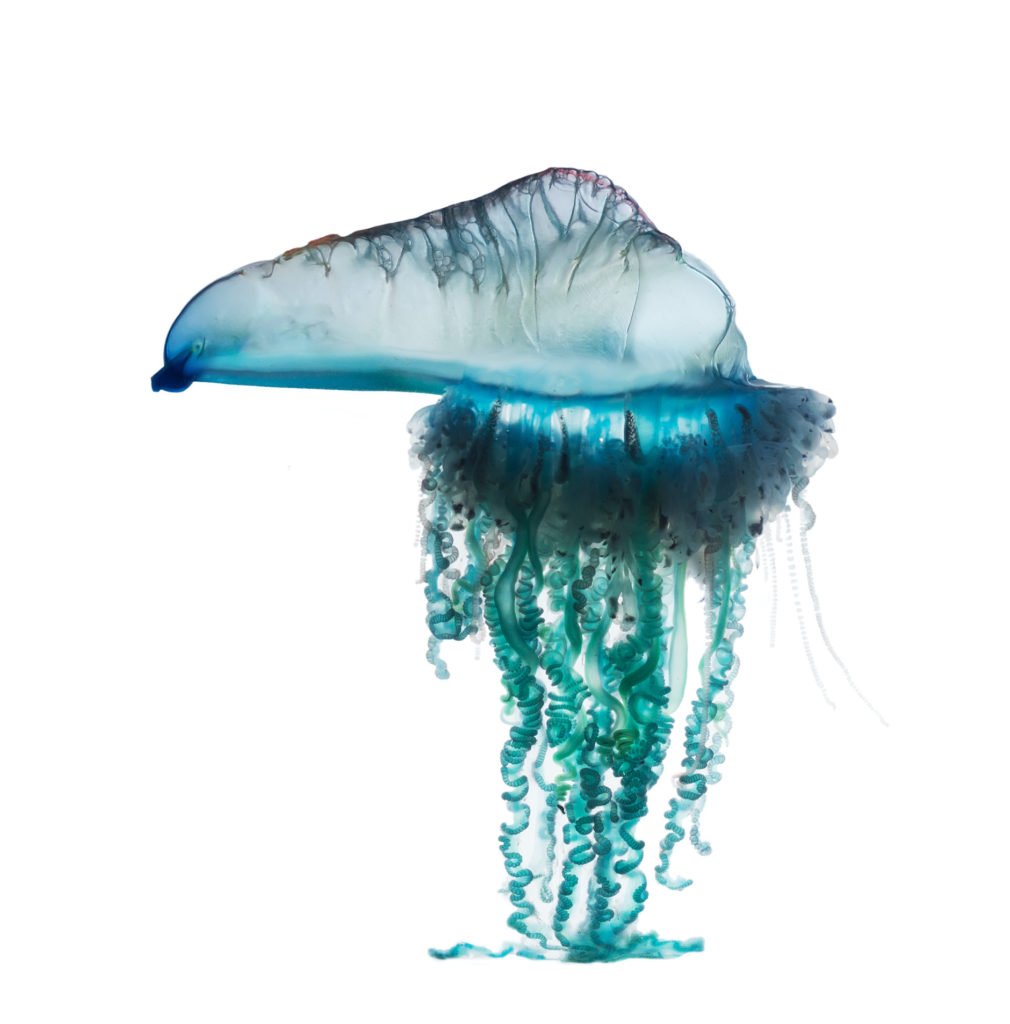10 Cool Facts About Jellyfish You Didn’t Know
How much do you know about these strange floating marine marvels? Are they really made of jelly? How do you really get rid of stings? We have the answers.

These fascinating creatures are marine marvels. Here are 10 interesting facts about jellyfish that can take your breath away without laying a tentacle on you!
1. They Are Not Fish
They are no way, no how fish of any type or description. They don’t have bones, gills, fins, scales, or any other fish equipment or body parts. “The fish part of the name is wrong,” says marine education specialist Terri Kirby Hathaway. So, what should you call them? “Well, jellies.”
2. They’re Named After a Greek Monster
Some jellies look like dainty umbrellas or bells decorated with an elegant fringe suspended from the center or the edge. The billowing main shape is called the medusa, as it resembles Medusa who had serpents for hair according to Greek mythology.
3. Jellies Get Around

“They can only move up and down in the water column,” says Hathaway. “They can’t go east, west, north, or south intentionally.” Jellies move up by collapsing the medusa (like quickly closing an umbrella) which pushes water down and propels them upward. Beyond that, these creatures go where the winds blow and the currents take them. Some jellies travel around the world in the ballast tanks of oceangoing ships to invade waters as non-native species when ships jettison the tanks
4.The Sting’s The Thing
Scientists classify jellies in the phylum Cnidaria (silent “C”). The name originates from the Greek word cnidos, meaning stinging nettle for the specialized stinging cells, cnidocytes or nematocysts. This cell “explodes” on contact, launching a harpoon-like organelle containing neurotoxins into whatever touched it. Jellies feed and defend themselves this way.
Most stings are painful but not life-threatening. There are exceptions in Pacific waters. Close relatives like sea anemones and corals, which spend their adult lives attached to the sea bottom, can also sting. Rinsing, not scrubbing, with vinegar is the best antidote.
5. Jellyfish Are Simpletons
Most jellies are simple organisms. Think of them as “bags” made of two cell layers, an outer ectoderm or epidermis (housing the stinging cells) and an inner endoderm or gastrodermis, (lining the gut). The filling between the layers is the mesoglea, a layer of jellylike substance that provides volume and weight. Some are transparent, others are colorful and translucent, and some change colors with the salinity of the water.
6. They’re Not Made Of Jelly
Jellies are 95% water. That’s one reason they look so elegant beneath the surface but look like a blob of goo on the beach.
Read our Summer Beach Safety Tips
7. They Come In All Shapes And Sizes

There are at least 9,000 known species of Cnidaria and some inhabit every ocean. Their sizes span from tiny to wow. The smallest medusae are barely visible (but still pack a sting). The largest, the Nomura’s jellyfish, can grow from the size of a grain of rice to six feet across in six months. A single jelly of this species can weigh up to 200 pounds!
8. They’re Simple Yet Complex
Medusozoa jellies have a two-step procreation plan. First, it involves egg fertilization by free-floating sperm. This produces larvae that sink and attach to a firm surface. Then the larvae grow into polyps that bud and release tiny medusae that grow into the adult form.
9. Jellyfish “Blooms” Can Cause Chaos
Sudden massive reproductive surges, known as “blooms,” can deplete local fish supplies, ruin fishing nets, and shut down nuclear plants by clogging the cooling water intakes. The cause of these blooms is still not completely understood.
10. The Portuguese Man O’ War Is Not A True Jellyfish

A frequenter of our eastern and southern coasts, the surface-living Portuguese man o’ war, is part of the same species and closely related, but not a true jellyfish. The interesting thing about the Portuguese man o’ war is that it’s not one organism but a colony of specialists that survive together but not apart. The telltale violet sail is one organism; the stinging tentacles are another.
That Classic Urban Myth About Peeing on Jellyfish Stings
You’ve heard that urban myth before, that you should urinate on a jellyfish sting to reduce the pain. This could actually do more harm than good.

Glenn Morris
North Carolina native Glenn Morris is a freelance Travel and Garden writer. He is the author of Taylor's Weekend Gardening Guide to Small Gardens, and North Carolina Beaches. His article What in the World is Workamping? appears in the 2021 Farmers' Almanac.


Love the information. I used it to make a book.
Wow! That’s great!
Great info!!
urinating on a jellyfish sting to reduce the pain is not an urban myth
Adolph’s Meat Tenderizer put on the wet skin to completely cover the jelly fish sting area works very well to kill the sting’s pain. Texas State Park rangers showed us that “trick” many years ago. I always have some in my vehicle when I go to the Texas coast.